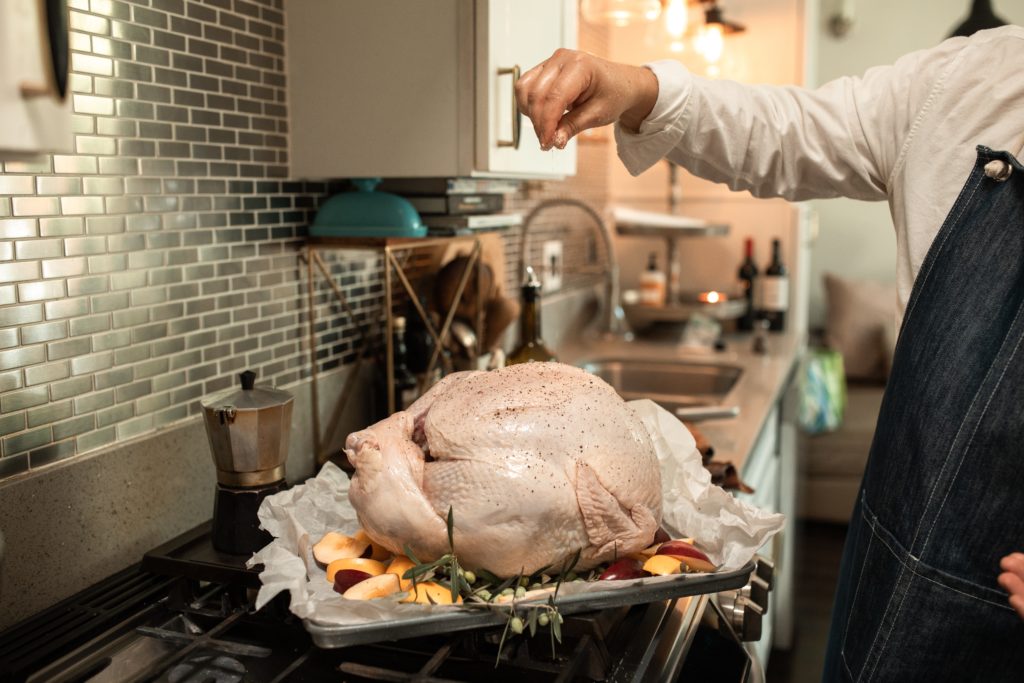 A delicious Thanksgiving feast is certainly something most people look forward to every year. Unfortunately, however, incorrect handling of poultry like chicken or turkey can cause salmonella or other foodborne illnesses. That’s why it’s important to safely handle the star of your dinner – the turkey – from start to finish! The Centers for Disease Control (CDC) offer four tips that can help keep your holiday meal a pleasant one!
A delicious Thanksgiving feast is certainly something most people look forward to every year. Unfortunately, however, incorrect handling of poultry like chicken or turkey can cause salmonella or other foodborne illnesses. That’s why it’s important to safely handle the star of your dinner – the turkey – from start to finish! The Centers for Disease Control (CDC) offer four tips that can help keep your holiday meal a pleasant one!
Four Turkey Preparation Safety Tips
- Thaw your turkey in a safe manner. There are three ways you can do so, which include thawing it in your refrigerator in a container, thawing it in a leak-proof bag in a sink filled with cool water, or thawing it in your microwave per the manufacturer’s instructions. People often leave their turkeys out on the counter to thaw, but this can cause rapid growth in bacteria. The safest way – and the way to ensure your turkey will be at its tastiest – is by thawing it in the fridge. You will need to plan ahead, though – 24 hours for each 4 to 5 pounds. If you choose the sink method, change out the water every 30 minutes so it does not become too warm – and create an environment for bacteria growth.
- Keep the surfaces your turkey touches clean. Residual juices from the turkey can cause other foods to become contaminated, so clean and disinfect any counters, cutting boards, or utensils you use on your turkey before using them for other food preparation. And, make sure to wash your hands with warm water and soap after you handle your turkey, too!
- Cook your stuffing thoroughly, or better yet, outside the bird. If you cook your stuffing in a separate casserole dish outside the bird, you can rest assured there will be no cross-contamination taking place. If you love the tradition of stuffing the turkey, you can minimize the risk of foodborne illness by stuffing your turkey just before cooking. You’ll also want to make sure the center of the stuffing reaches 165ºF. Allow your bird and stuffing to rest for 20 minutes outside of the oven before removing the stuffing, as this allows both to cook a little more.
- Make sure turkey is thoroughly cooked, too. Of course, this seems to just stand to reason, but often food poisoning from poultry occurs because the bird has not been cooked properly or to the right temperature. Do not cook at a temperature of less than 325ºF. Cook in a roasting pan that’s about 2 to 2 ½ inches deep. Use a meat thermometer to make sure your turkey reaches a temperature of 165ºF at all points (test thickest part of breast, thigh, and wing joint). Pop-up thermometers provide a decent indication of doneness, but you should still check with a meat thermometer to be sure. And, allow the turkey to rest outside the oven for 20 minutes before carving.
Find the perfect bird for your feast at Charlie Johns.
For the best turkey for your feast, make sure to visit the meat department at Charlie Johns. You’ll find the right bird for your table, as well as everything else you need for the perfect Thanksgiving dinner.